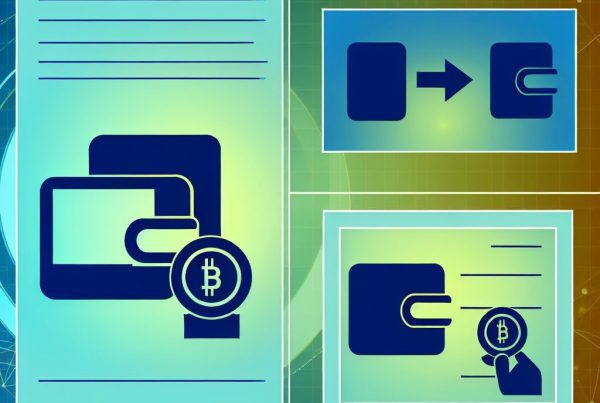Understanding Off-Chain Data in the Cryptocurrency Industry
The cryptocurrency landscape is constantly evolving, and with it comes a myriad of concepts that can be complex and challenging to grasp. One such concept is off-chain data. This article delves into what off-chain data is, its significance in the cryptocurrency ecosystem, and how it contrasts with on-chain data. We will also explore real-world applications, benefits, challenges, and answer some frequently asked questions to provide a comprehensive understanding of this crucial topic.
What Is Off-Chain Data?
Off-chain data refers to any information that is not recorded on a blockchain. This data can exist outside the blockchain environment and is often used to enhance the functionality and efficiency of blockchain applications. Off-chain data can include various types of information, such as transaction details, user identities, and external data feeds.
In contrast, on-chain data is information that is directly recorded on the blockchain. This includes transaction records, smart contracts, and any other data that is stored within the blockchain’s immutable ledger. While on-chain data is transparent and secure, it can also be limited in terms of scalability and speed.
The Importance of Off-Chain Data
Off-chain data plays a vital role in the cryptocurrency industry for several reasons:
- Scalability: Off-chain solutions can handle a larger volume of transactions without congesting the blockchain, allowing for faster processing times.
- Cost Efficiency: Storing data off-chain can reduce transaction fees associated with on-chain storage, making it more economical for users and developers.
- Enhanced Privacy: Off-chain data can provide a layer of privacy, as sensitive information does not need to be publicly accessible on the blockchain.
- Interoperability: Off-chain data can facilitate interactions between different blockchains and traditional systems, promoting a more integrated ecosystem.
How Off-Chain Data Works
Off-chain data operates through various mechanisms that allow it to interact with on-chain systems. Here are some common methods:
- Oracles: Oracles are third-party services that provide external data to smart contracts on the blockchain. They act as a bridge between off-chain data and on-chain applications, enabling smart contracts to execute based on real-world events.
- Sidechains: Sidechains are separate blockchains that run parallel to the main blockchain. They can process transactions and store data off-chain while still being able to communicate with the main chain.
- Layer 2 Solutions: Layer 2 solutions, such as the Lightning Network for Bitcoin, allow transactions to occur off-chain while still benefiting from the security of the main blockchain.
Real-World Applications of Off-Chain Data
Off-chain data has found numerous applications across various sectors within the cryptocurrency industry. Here are some notable examples:

1. Decentralized Finance (DeFi)
In the DeFi space, off-chain data is crucial for providing accurate pricing information for assets. Oracles like Chainlink aggregate data from multiple sources to ensure that smart contracts execute based on reliable market prices. This prevents issues such as price manipulation and ensures fair trading conditions.
2. Supply Chain Management
Blockchain technology is increasingly being used in supply chain management to enhance transparency and traceability. Off-chain data can include information about product origins, shipping details, and quality control metrics. By integrating this data with blockchain records, companies can provide consumers with verifiable information about their products.
3. Identity Verification
Off-chain data can also be utilized for identity verification processes. By storing sensitive personal information off-chain and linking it to a blockchain identity, users can maintain control over their data while still proving their identity when necessary. This approach enhances privacy and security.
Benefits of Using Off-Chain Data
The integration of off-chain data into blockchain applications offers several advantages:
- Improved Performance: Off-chain solutions can significantly enhance the performance of blockchain applications by reducing latency and increasing transaction throughput.
- Lower Costs: By minimizing the amount of data stored on-chain, users can save on transaction fees, making blockchain technology more accessible.
- Flexibility: Off-chain data allows developers to create more complex applications that can interact with various data sources and systems.
- Enhanced User Experience: Faster transaction times and reduced costs lead to a better overall user experience, encouraging wider adoption of blockchain technology.
Challenges of Off-Chain Data
Despite its benefits, off-chain data also presents certain challenges:
- Trust Issues: Since off-chain data is not recorded on the blockchain, there may be concerns about its accuracy and reliability. Users must trust the sources providing this data.
- Centralization Risks: Some off-chain solutions may rely on centralized entities, which can undermine the decentralized ethos of blockchain technology.
- Integration Complexity: Integrating off-chain data with on-chain systems can be technically challenging and may require additional development resources.
Future of Off-Chain Data in Cryptocurrency
The future of off-chain data in the cryptocurrency industry looks promising. As blockchain technology continues to mature, the demand for efficient and scalable solutions will grow. Innovations in off-chain data handling, such as improved oracles and more robust Layer 2 solutions, will likely emerge to address current challenges.
Furthermore, as regulatory frameworks evolve, the need for privacy-preserving solutions will increase. Off-chain data can play a crucial role in ensuring compliance while maintaining user privacy.
FAQs About Off-Chain Data
What is the difference between on-chain and off-chain data?
On-chain data is stored directly on the blockchain and is immutable, while off-chain data exists outside the blockchain and can be more flexible and scalable.
Why is off-chain data important for smart contracts?
Off-chain data allows smart contracts to access real-world information, enabling them to execute based on external events and conditions.
How do oracles work in relation to off-chain data?
Oracles act as intermediaries that fetch and verify external data before relaying it to smart contracts on the blockchain, ensuring accurate execution.
Can off-chain data be trusted?
Trust in off-chain data depends on the reliability of the sources providing it. Using decentralized oracles can enhance trustworthiness.
What are some examples of off-chain data use cases?
Examples include DeFi applications using price oracles, supply chain management systems integrating product data, and identity verification processes leveraging off-chain information.
Conclusion
Off-chain data is a critical component of the cryptocurrency ecosystem, providing scalability, cost efficiency, and enhanced functionality for blockchain applications. As the industry continues to evolve, the integration of off-chain data will play a significant role in driving innovation and adoption. Understanding the nuances of off-chain versus on-chain data is essential for anyone looking to navigate the complexities of the cryptocurrency landscape.
For the latest updates and insights into the cryptocurrency world, consider visiting Bitrabo. You can also follow me on social media for more discussions and insights: X, Instagram, and Threads.
Disclaimer: The information provided in this article is for informational purposes only and should not be considered financial advice. Always conduct your own research before making investment decisions.
The Crypto Watchlist of the Week 🔎
Subscribe to receive expert-curated projects with real potential—plus trends, risks, and insights that matter. Get handpicked crypto projects, deep analysis & market updates delivered to you.


